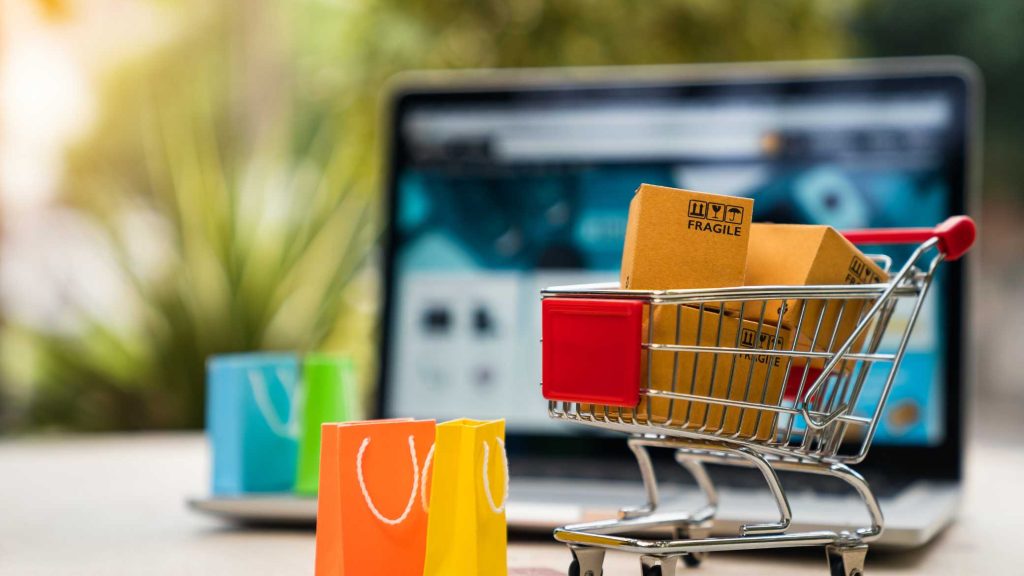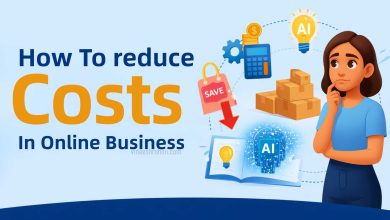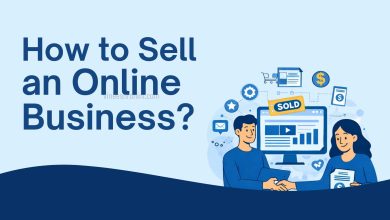Start a Fashion Store Online – Comprehensive Guide 2025
Start a Fashion Store Online : The fashion industry has always been one of the most vibrant, evolving, and profitable sectors globally. As we enter 2025, starting a fashion store online is more accessible, scalable, and profitable than ever. With the rise of ecommerce technologies, social media marketing, influencer branding, and AI-driven tools, entrepreneurs can launch and grow successful online fashion businesses with minimal investment.
Table of Contents
Whether you dream of launching a sustainable clothing line, a luxury boutique, or a niche fashion accessories store, this guide offers a comprehensive step-by-step roadmap to help you start and grow your fashion store online in 2025.
Why Starting an Online Fashion Store in 2025 Makes Sense

Online fashion retail is booming. According to industry projections, the global ecommerce fashion market is expected to surpass $1.5 trillion by 2025. This explosive growth is fueled by consumer preference for online shopping, increased mobile usage, fast fashion trends, and the integration of AI in customer personalization.
Also Read : How to Manage Inventory for Online Stores ?
Starting a fashion ecommerce business gives you the freedom to reach a global audience, work flexibly, and build a brand around your creativity. You don’t need a physical store, huge inventory, or a large team. All you need is a laptop, internet connection, and the right strategy to build a high-converting fashion brand online.
Best Fashion Niches to Consider in 2025
The first step in building a successful fashion store is choosing the right niche. A niche helps you target a specific audience, stand out in a competitive market, and create a loyal customer base. Some of the most profitable fashion niches in 2025 include sustainable fashion, streetwear and urban fashion, gender-neutral and unisex clothing, plus-size fashion, fashion accessories like bags and belts, activewear and athleisure, kids and baby clothing, pet fashion, and ethnic or modest wear. When selecting your niche, consider your passion, audience demand, competition level, and profit margins.
Step 1: Define Your Fashion Brand
Your brand is your identity. It determines how your customers perceive you and whether they trust your products. Start by creating a compelling brand story that reflects your mission, values, and unique selling proposition. Are you offering eco-friendly clothing? Affordable everyday wear? Premium handcrafted apparel? Choose a brand name that is short, memorable, and relevant to your fashion style. Design a professional logo, select a brand color palette, and establish a consistent tone of voice for all your communications. Building a strong brand foundation will set the tone for your entire fashion business.
Step 2: Conduct Market and Product Research
Before investing in inventory or building a website, research what your target market actually wants. Use tools like Google Trends, Pinterest Trends, and TikTok to identify trending styles and outfits. Explore platforms like Instagram and YouTube to see what influencers are promoting. Conduct keyword research using tools like Ahrefs, SEMrush, and Ubersuggest to find high-search-volume terms related to your niche. Validate your product ideas by conducting surveys, running social media polls, or testing ads with mockups. Ensure there is enough demand and that you can compete effectively before moving forward.
Step 3: Choose the Right Business Model

The fashion industry supports multiple ecommerce models. Dropshipping is ideal for beginners who want to avoid inventory and shipping hassles. Platforms like Spocket and DSers allow you to sell products directly from suppliers. Print-on-demand services like Printful and Printify enable you to sell custom designs on t-shirts, hoodies, and bags. If you want to create your own label, you can go with a private label or wholesale model where you source items in bulk and sell under your brand. For creatives, handmade or custom-tailored fashion offers a unique, high-margin opportunity. Choose the model that aligns with your budget, experience, and long-term goals.
Step 4: Legally Register Your Fashion Business
Legitimizing your online fashion store ensures compliance and builds trust with customers. Register your business name and obtain the necessary licenses and tax IDs. In India, apply for a GST number and consider registering as an LLP or private limited company depending on your scale. Purchase your domain name early to prevent competitors from taking it. It’s also a good idea to trademark your brand name and logo to protect your intellectual property. Setting up these legal foundations may seem tedious, but it will help you avoid penalties and scale your business safely.
Step 5: Build Your Fashion Ecommerce Website
Your website is your storefront, and it must look as stylish and functional as your fashion products. Platforms like Shopify, Wix, and WooCommerce make it easy to build an ecommerce website with professional templates. Shopify is great for beginners due to its ease of use and fashion-friendly themes. WooCommerce offers more customization and SEO benefits for tech-savvy users. Include must-have pages like Home, About Us, Product Categories, Size Guide, FAQ, Return Policy, and Contact Us. Optimize your site for mobile users and integrate secure payment gateways like Razorpay, Stripe, or PayPal. The goal is to create a smooth shopping experience that converts visitors into buyers.
Step 6: Source Quality Fashion Products
If you’re dropshipping, choose reliable suppliers with high ratings and fast shipping times. For private label or wholesale models, you can source from Alibaba, Indiamart, TradeIndia, or local manufacturers. Always request samples to inspect fabric quality, stitching, and fit. Consider partnering with small tailoring units if you want to create custom apparel. For eco-friendly or luxury clothing, focus on high-quality materials like organic cotton, bamboo, or recycled polyester. Avoid cheap, low-quality suppliers that can ruin your brand reputation. Build long-term relationships with vendors for better pricing and priority fulfillment.
Step 7: Plan Your Shipping and Fulfillment
Fast and affordable shipping is a key factor in customer satisfaction. Choose logistics partners that offer tracking, cash on delivery, and reasonable rates. In India, Shiprocket, Delhivery, and Bluedart are popular for domestic delivery. For international orders, use FedEx, Aramex, or DHL. You can either fulfill orders yourself, use a third-party logistics provider (3PL), or store products in fulfillment centers like Amazon FBA or WareIQ. Offer free shipping thresholds (e.g., free shipping on orders above ₹999) to increase average order value. Clearly communicate delivery timelines and make your return policy visible on your website.
Step 8: Add High-Quality Visual Content

Fashion sells through visuals. Invest in a good camera or smartphone, and shoot product photos in natural lighting. Use models to showcase how the clothes fit and look in real life. Add multiple angles and zoom-in shots to show fabric texture. Use lifestyle photography to help customers visualize how they’ll look wearing your products. Edit your images with tools like Canva, Lightroom, or Snapseed for a polished appearance. Videos and 360-degree product views can further boost conversion rates. Ensure all your content is optimized for fast loading and SEO-friendly file names.
Step 9: Create a Launch Marketing Plan
Marketing is the engine that drives traffic and sales. Start building buzz around your brand before launch. Create social media profiles on Instagram, Facebook, Pinterest, and TikTok. Post teaser content, behind-the-scenes videos, and style inspiration. Collaborate with fashion influencers to promote your launch. Run email campaigns to build a waitlist of interested shoppers. Offer early bird discounts or launch giveaways to generate excitement. Use content marketing and SEO-optimized blog posts to improve your organic reach. Leverage reels, stories, and user-generated content to drive engagement. Once you launch, maintain a regular posting and email schedule to keep customers engaged.
Step 10: Master Fashion Ecommerce SEO
Search engine optimization helps your store get discovered without paid ads. Start by identifying keywords related to your niche such as “buy ethnic kurtis online,” “affordable men’s fashion 2025,” or “sustainable fashion brands India.” Use these keywords in your product titles, meta descriptions, URLs, and blog content. Optimize image ALT tags and product reviews. Create blog content like “Top Summer Fashion Trends 2025” or “How to Style a Denim Jacket” to boost rankings. Use schema markup for product pages to increase click-through rates. Regularly audit your site for speed, broken links, and mobile compatibility.
Step 11: Launch Paid Advertising Campaigns
Once you’ve optimized for organic traffic, scale using paid ads. Run Facebook and Instagram ads targeting fashion-interested users by age, gender, location, and interest. Use carousel ads, video reels, and dynamic product ads. Invest in Google Shopping Ads to appear in search results for fashion queries. Pinterest ads can work well for style-conscious audiences. Monitor your ROAS (return on ad spend) and optimize campaigns based on conversion data. Retarget cart abandoners and website visitors using pixels. Paid ads can accelerate your growth when executed strategically with clear offers and calls to action.
Step 12: Collect Reviews and Build Trust
Online shoppers rely heavily on social proof. Ask your customers to leave reviews and share photos of themselves wearing your products. Offer incentives like discount coupons for every photo review submitted. Use review apps like Loox or Judge.me to automate the process. Showcase testimonials prominently on your homepage and product pages. Enable Q&A sections for product-related queries. Trust-building elements like SSL certification, return policy, and customer support chat also increase your brand’s credibility.
Step 13: Measure Performance and Optimize
Ecommerce success lies in constant analysis and optimization. Use Google Analytics 4, Shopify Analytics, and Facebook Pixel to monitor traffic sources, bounce rates, and conversion funnels. Track metrics like average order value, customer lifetime value, cart abandonment rate, and product sell-through rate. Identify your top-performing products and scale their promotion. Experiment with upsells, bundling, and flash sales to boost revenue. If something isn’t working, test new headlines, page layouts, or ad creatives. Always use A/B testing before making major changes.
Fashion Ecommerce Trends to Watch in 2025
Stay updated with trends shaping the future of fashion ecommerce. AI-driven recommendations will personalize shopping experiences. Augmented reality will allow customers to try clothes virtually. Social commerce will dominate with features like TikTok Shop, Instagram Checkout, and YouTube Shopping. Voice shopping and chatbots will streamline ordering. Digital wearables and NFT-based fashion items will open new digital revenue streams. Sustainability will no longer be optional; consumers will prefer eco-conscious brands with ethical sourcing and green packaging.
Scaling Your Fashion Store in 2025
Once you’ve established product-market fit, it’s time to scale. Expand your product line, introduce seasonal collections, and explore international shipping. Launch limited-edition collaborations to build brand hype. Hire a small team for customer service, content, and fulfillment. Build an email list for promotions and product drops. Offer loyalty programs and personalized recommendations to retain customers. Consider launching a branded mobile app for better engagement. Invest in PR, influencer partnerships, and media coverage to boost your brand reputation.
Start a Fashion Store Online – Conclusion

Starting a fashion store online in 2025 is a powerful opportunity for creative entrepreneurs to build profitable brands with global reach. With the right niche, tools, and strategy, you can launch a stylish, professional, and highly scalable ecommerce fashion business from scratch.
Buy Now : Ecommerce Website With 100 Products
From defining your brand and sourcing products to building a website and marketing your store, every step can be executed with minimal risk and maximum potential. As consumers continue to shop online and embrace digital fashion, the future of ecommerce fashion is not just profitable—it’s unlimited.
Disclaimer : This guide is for informational purposes only. Business success may vary based on personal effort, market conditions, and business model. Conduct thorough research and consult legal or financial advisors when necessary.
Keywords : Start a Fashion Store Online – Start a Fashion Store Online 2025 – Start a Fashion Store Online Guide



